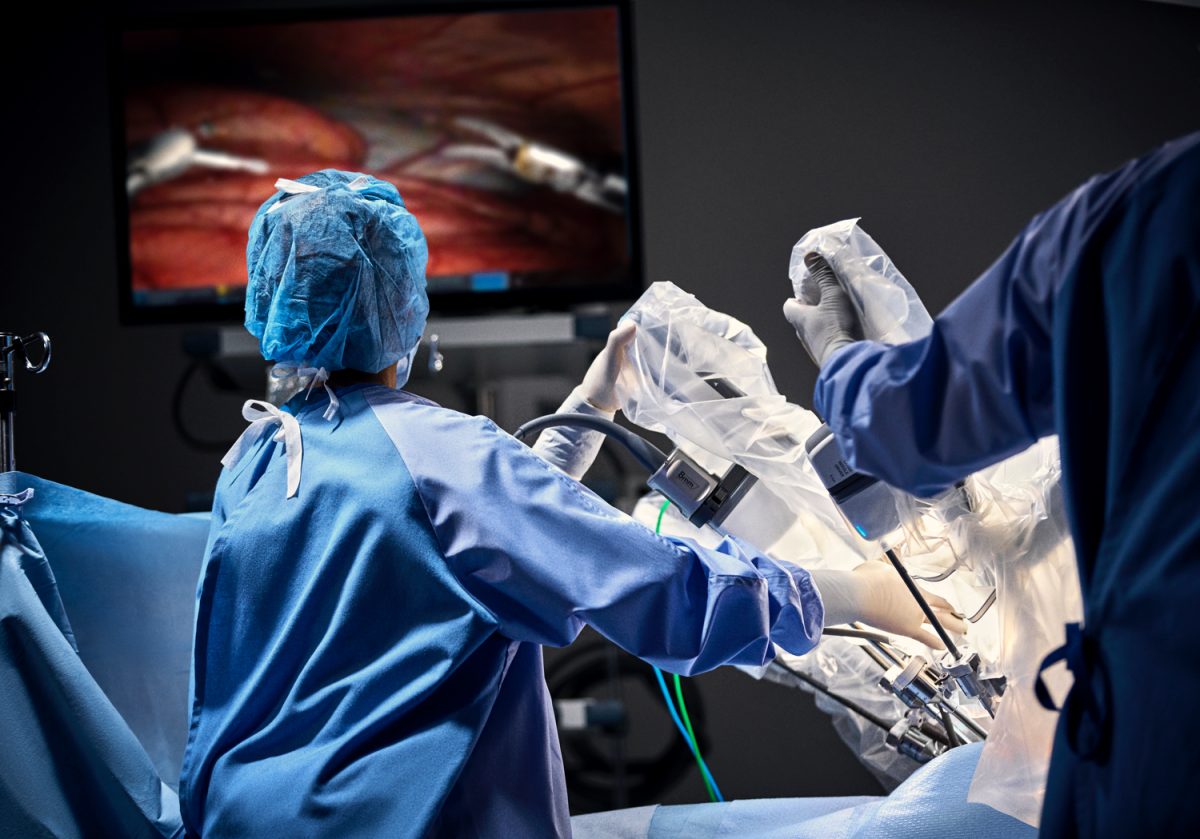Medical experts at the University of Iowa Hospitals and Clinics reached a significant milestone of completing 10,000 surgeries with the help of robots before the end of last year.
UIHC has been performing robotic-assisted laparoscopic surgeries for about 20 years, averaging about 100 per month. UIHC bought its first robot surgery system in 2002.
Currently equipped with three Da Vinci Robotic Surgical Systems, a UIHC board of doctors and nurses is campaigning to add at least one more.
Paul Gellhaus, a urologist at UIHC with extensive experience in robotic-assisted surgeries and laparoscopic surgery since the 1990s, said UIHC has set the tone for the use of robots in hospitals nationwide.
“Iowa has been doing laparoscopic surgery before it was cool,” Gellhaus said. “The robotic stuff certainly has caught on to other hospitals, but it feels like we’ve been doing it the longest, and we get to train people here that end up going out and doing other surgeries in the state.”
The robots are mostly used for pelvic and abdominal surgeries such as hysterectomies, kidney and pancreas removal, and repairing torn or leaking bowels. Oncologists at UIHC also frequently use the technology to remove tumors.
To perform robotic surgery, a doctor will map out where the robot needs to work on the patient and place tubes in those areas. The arms of the robot are then able to extend through the tubes and get to the part of the patient’s body that needs to be repaired or removed.
While all of this is happening, the surgeon observes a screen with an enlarged view of the patient and controls the tools on the robot with levers that mimic the surgeon’s hand movements. This allows for a more detailed view of the area without the need to make large incisions.
David Bender, a gynecologic oncologist at UIHC, is also at the forefront of robotic surgeries at UIHC and praised the technology.
“As soon as I got my hands on it, I couldn’t get enough,” Bender said. “I thought it was just such a remarkable device because it really reproduced your own hand movements so well and with such precision. I couldn’t find anything that was even remotely close.”
Bender said before the technology became available, many patients would have to recover for three days after an operation. But now, because of the robots, patients may only need to stay one night, or even be able to go home the day of their operation.
RELATED: At UIHC, surgery goes robotic
“It allows us to do the surgical dissections with a little bit more precision and better visualization,” Bender said.
Although the robot makes surgery much less invasive and more precise, Bender said the robot is just a tool to assist surgeons and is not used for every kind of surgery. There are still many instances when surgery is easier for a doctor to do with their own eyes and hands.
Gellhaus also trains doctors on how to use the system with virtual reality simulations, performing surgeries on 3-D printed body parts, and working on cadavers.
Above all, Gellhaus said he finds great fulfillment in helping patients experience less pain and shorter hospital stays.
“A lot of these procedures are done for cancer patients, and cancer patients were always a special group to me,” Gellhaus said. “They have real, serious problems, and if you can make someone’s problem better and do it in a less painful way as a surgeon, that’s a really neat opportunity.”



